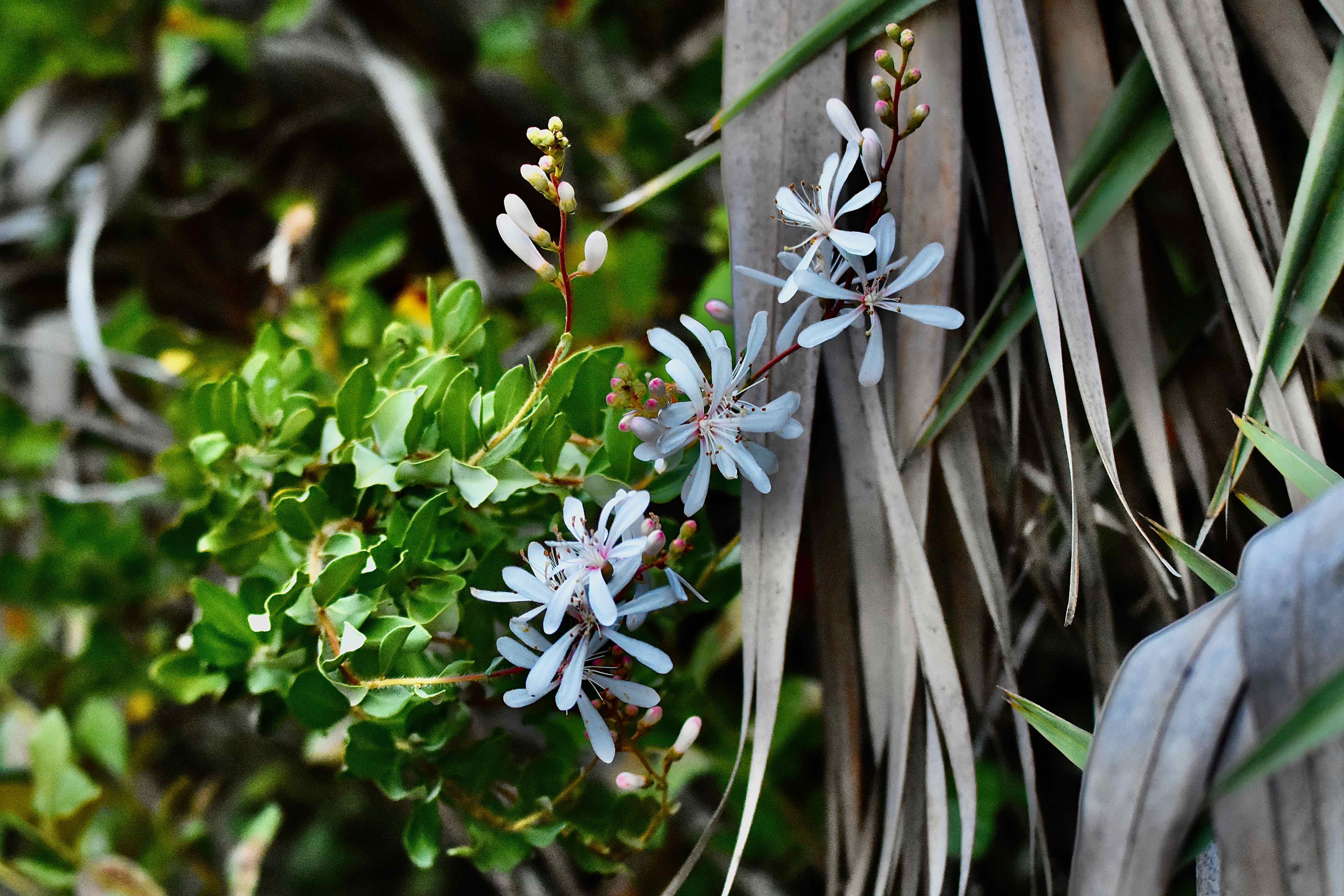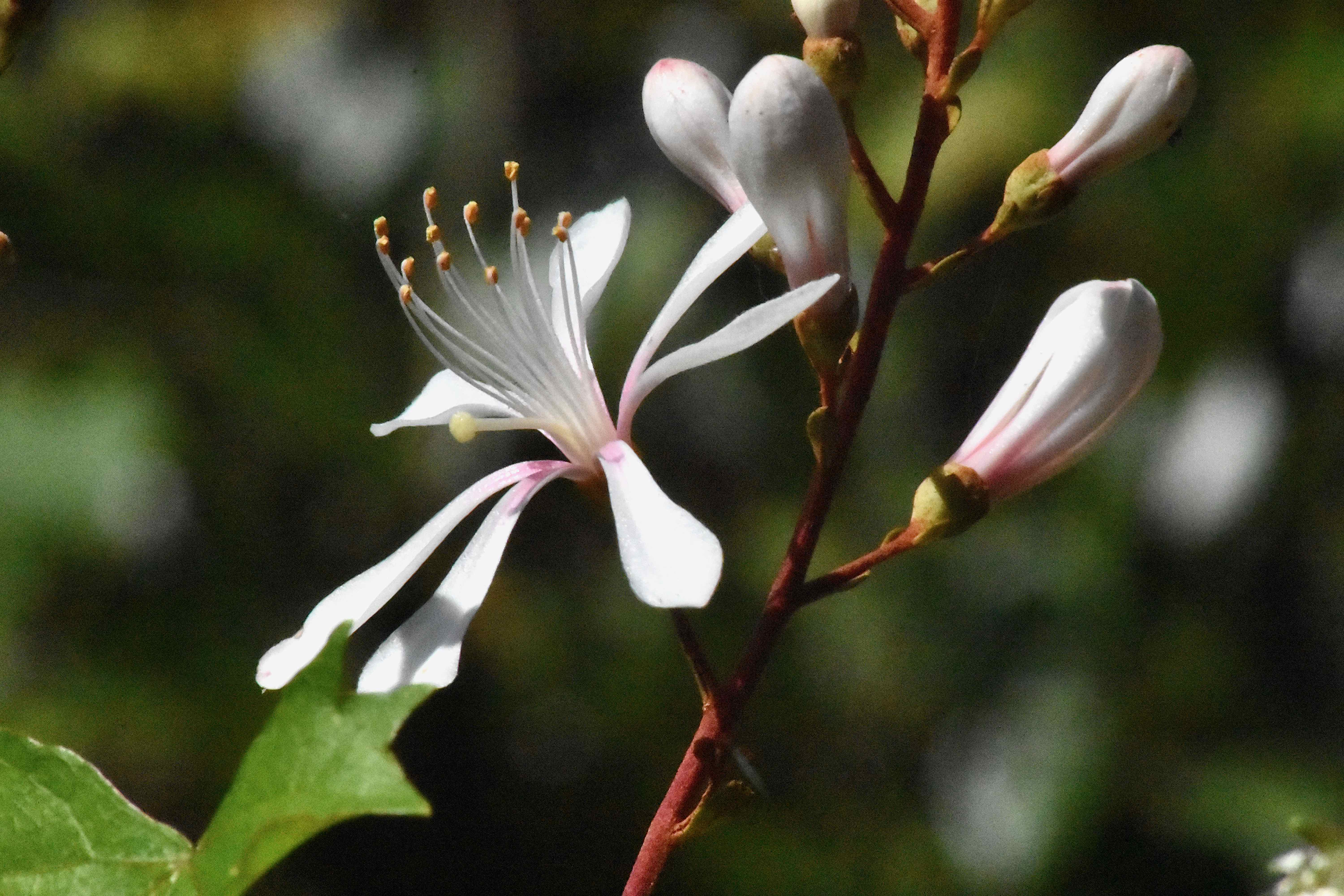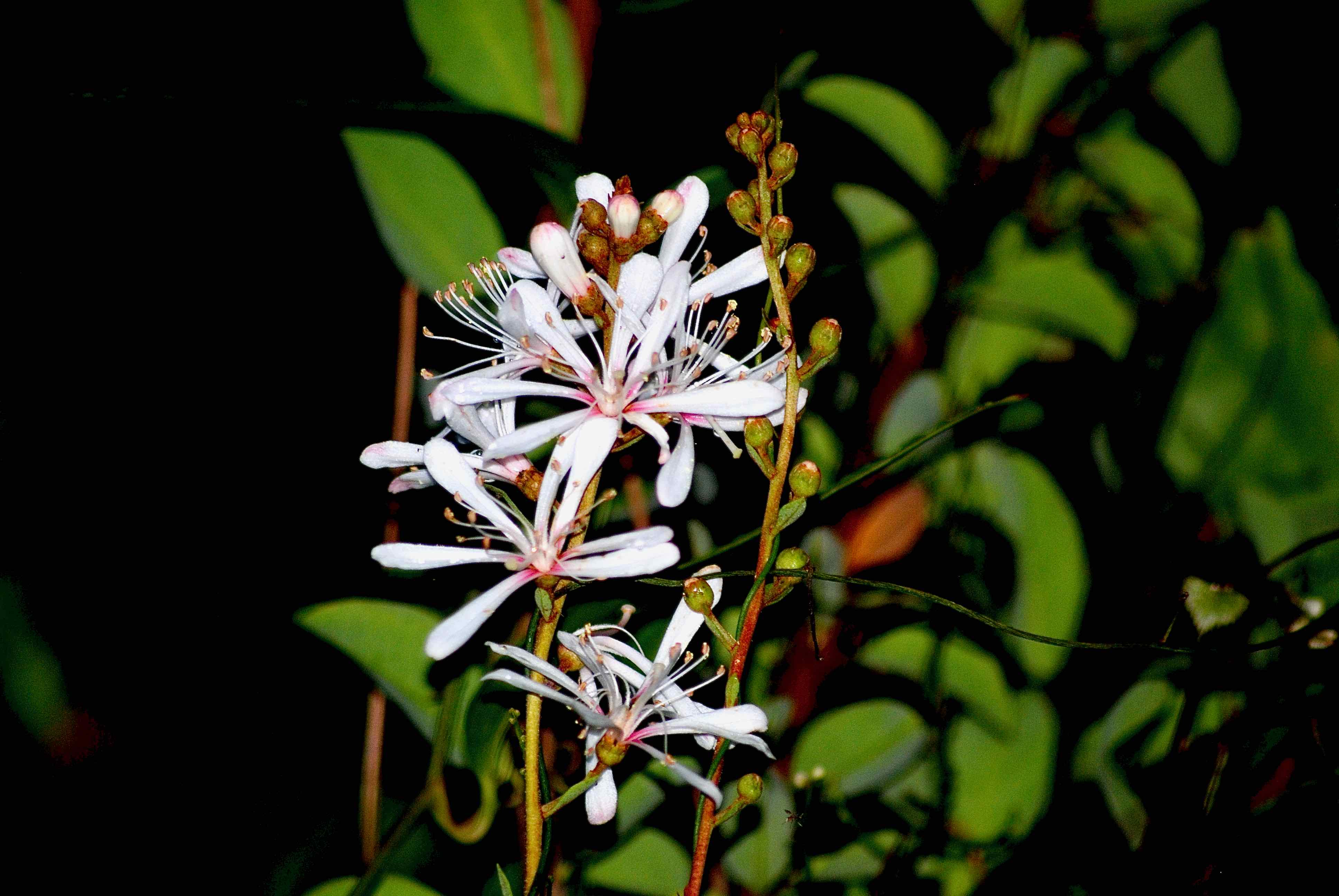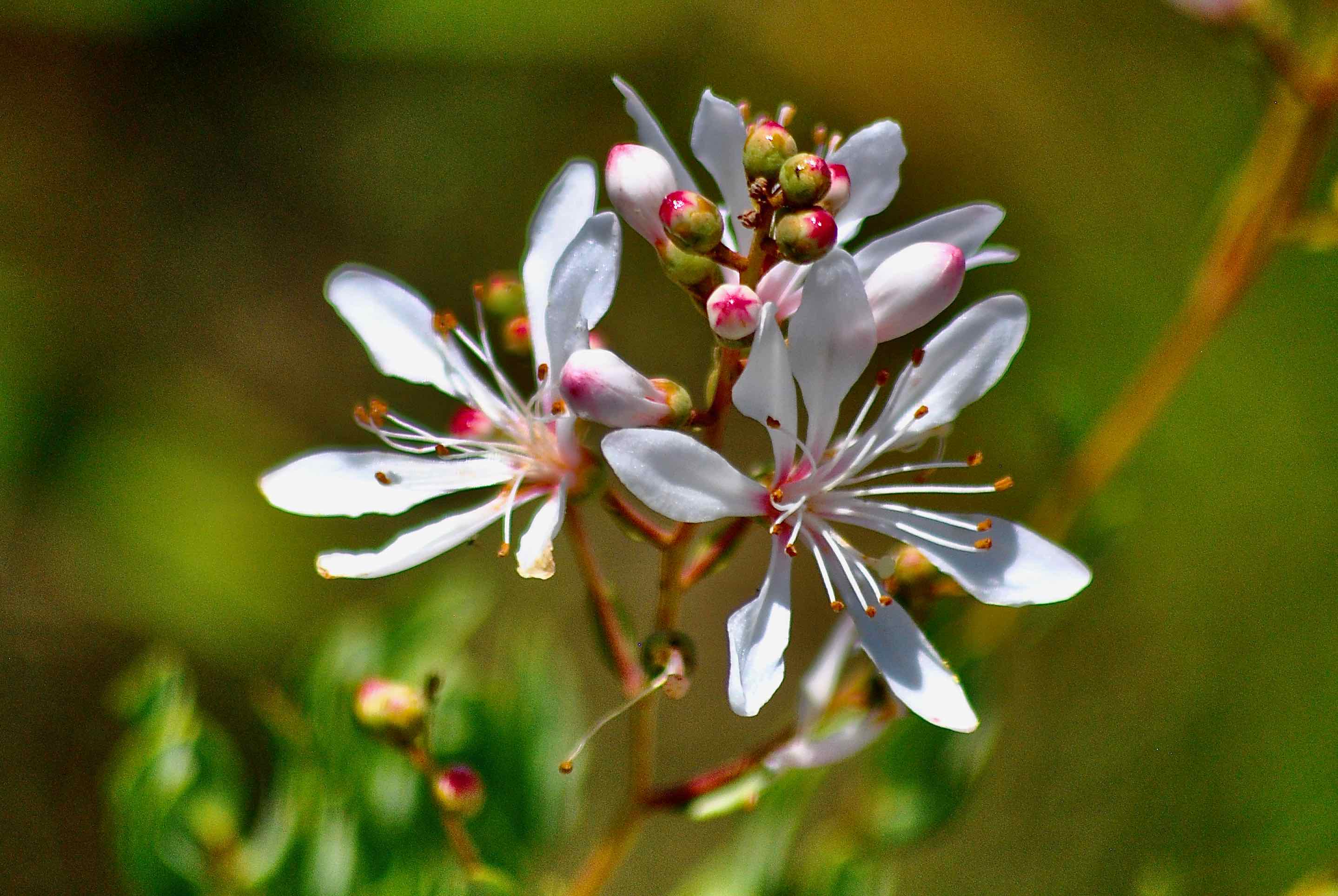
Tarflower, photographed at Kristin Jacobs Natural Area at Hillsboro Pinelands, Parkland, Broward County, in May 2017
Tarflower. An ugly name for a gorgeous plant, but one that, believed or not, makes perfect sense.
You see, the blooms of tarflower, Bejaria racemosa, are a bit problematic for pollinators. They are something of a magnet for bees, butterflies and other insects. But the petals, calyx and fruit can have a sticky substance on them; bugs frequently get trapped if they wander onto it, and that, of course, is how the plant gets its common name. Touch the flower, especially the back, and you can feel what we mean.
Researchers have found that tarflower's sticky resin has the same strength as commercially available flypaper. It's also been reported that the flower itself has been used as a kind of biological flypaper — it attracts flies as well as traps them. Tar flower. Tarflower. We still think it deserves a better name. In any case, tarflower is a Florida native that's found throughout the Peninsula, excluding mainland Monroe County. It's also native to the southeastern United States, including Georgia, Alabama and South Carolina.
This shrub thrives in the sandy soil typically found in pine flatwoods and scrubs. It grows four to eight feet tall, sometimes as much as 10, and can be as broad as it is tall. It can have a few branches that are mostly upright. The leaves are simple, oval-shaped, mostly upright and arranged alternately along the stem. Both the stem and leaves are covered with stiff hairs.
Tarflower blooms spring to fall — we've seen it as early as late January — but peaks in May and June. The flowers are large, white, white with a pink tinge to them or pink with a white tinge. They produce a small, sticky capsule-like fruit that's eaten by some wildlife.
It thrives in full sun or part shade and can take cold down to about 10 degrees Fahrenheit. It is also drought tolerant once established. Tarflower is considered a vulnerable species from an extinction point of view, we're guessing because of dwindling habitat. Still, the Institute for Regional Conservation in Delray Beach considers it a common plant within South Florida.
It is commercially grown but can be difficult to transplant from pot to ground, according to the University of Florida; some gardeners will include it their backyard plantings as an accent shrub, but it's also used in restorations and natural landscapes. Despite tarflower's beauty and landscape potential, it's not widely available, if at all, among commercial nurseries. It can be grown from seed. Standard disclaimer goes here: don't collect seeds from public lands. It's illegal. Collect on private property only with the permission of the owner. There are legimate ways to obtain seeds, but it might take some digging.
Other common names for tarflower include flyweed, catchfly and flycatcher, all stemming from that sticky substance. It is a member of Ericaceae, the blueberry family.
Kristin Jacobs Natural Area at Hillsboro Pinelands



